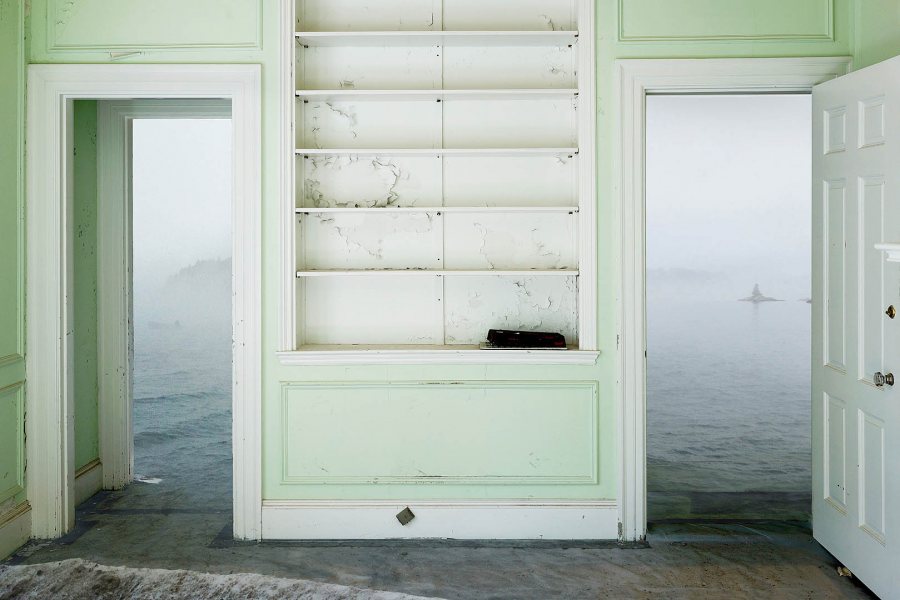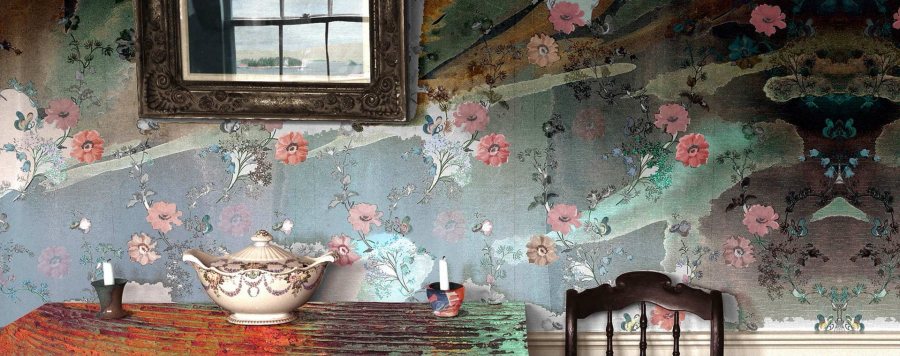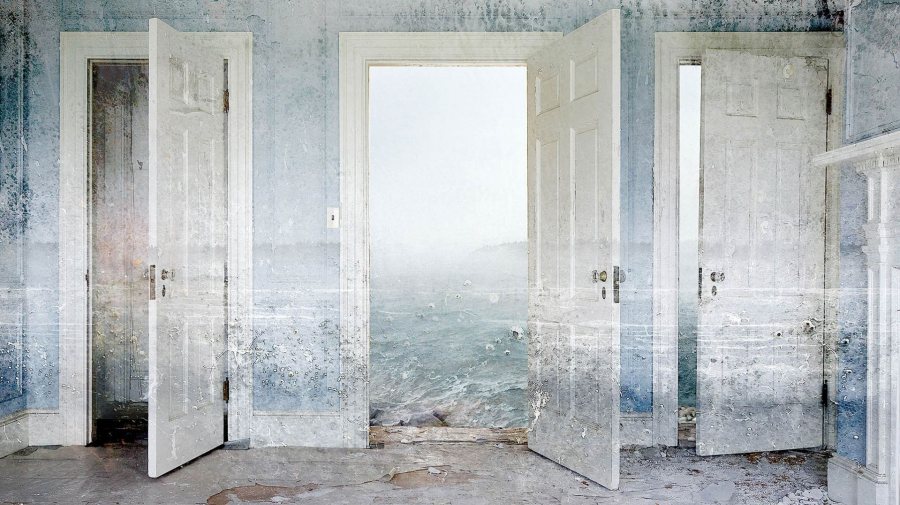
Pioneer of digital imagery opens show, debuts book at Bates museum
An exhibition of Maine photographer Jeffery Becton’s digital images, which merge seascape and interior views in dreamlike ways, opens at the Bates College Museum of Art with a reception at 6 p.m. Friday, Nov. 6, in the Olin Arts Center, 75 Russell St.
Becton will sign copies of the new book The Farthest House (Marshall Wilkes) during the opening. The book features 68 reproductions of Becton’s images; an exploration of his work and career by noted Maine art historian Carl Little; and appreciations of the artist by novelist Deborah Weisgall, Wall Street Journal critic Peter Plagens and Bates museum director Dan Mills, who curated the exhibition.
Opening with The View Out His Window (and in his mind’s eye): Photographs by Jeffery Becton is the exhibition The Art of Occupy: The Occuprint Portfolio, a show of posters from the worldwide Occupy movement. The exhibitions run through March 26. (Learn more about The Art of Occupy.)
Showing at the museum through the same period is Maine Collected: Contemporary Selections from the Permanent Collection, an exhibition of images from the museum’s holdings by living artists with a Maine connection. (Learn more about Maine Collected.)
Bates art museum events are always open to the public at no cost. The museum’s regular hours are 10 a.m. to 5 p.m. Monday through Saturday (until 7 p.m. Wednesdays while Bates is in session). For more information, please contact 207-786-6158 or museum@bates.edu.
Jeffery Becton
“Jeffery Becton is a pioneer in the field of fine-art photography,” Carl Little writes in The Farthest House.
“He was there at the beginning, in the early 1990s, turning the new digital tools to his artistic purposes when almost no one else was using them in that manner. They provided him with a way to create a surreal sense of place that is his alone.”
Becton uses graphics technology to create dreamlike, seamless, surprising harmonies between disparate elements — colors, textures and pictorial components. A resident of Deer Isle, in Down East Maine, Becton draws on the state’s dramatic coastal environment for his digital montages, especially the long views of sea and sky.
Yet his work is as much about interior as exterior, as his camera captures domestic settings inside the elaborate, often quirky summer houses of the Down East coast. And Becton’s work is interior also in the sense, writes museum director Mills, of an “introspective and contemplative space that enlivens one’s imagination, and is no doubt encouraged in this stunning and remote location.”
“They are photographs, and they are not,” novelist Weisgall writes in The Farthest House. “Despite knowing better, we want to believe what we see in them.
“Becton’s seductive elegance and his assured sense of formal control encourage credulity, even though we understand their impossibility, even though it is clear that what we are looking at is a photographic hallucination. Becton’s works are meditations on ambivalence: digital montages, beautiful and unsettling mashups, altered realities.”
Becton has created his largest-ever images for the Bates show. “The smallest images are 42 inches wide,” Mills says. “Some of the panoramic images are 7 feet long. Visitors will find it exciting to experience these dreamy and dramatic images on this scale.”
“Becton’s works are meditations on ambivalence.”
Becton was born in New Jersey in 1947. He received a bachelor’s degree in history from Yale in 1970, and a master’s of fine arts in graphic design from the Yale School of Art (now Yale School of Art and Architecture) in 1976. Becton moved to Deer Isle in 1978.
Becton has had solo exhibitions in museums and galleries throughout Maine — most recently, A Singularity of Place at the Maine Museum of Photographic Arts in Portland. Becton’s work has been shown in group exhibitions in Maine, New England and New York State, including at the Portland Museum of Art and Center for Maine Contemporary Art.
His work is in collections including those of the Farnsworth Museum of Art, New Orleans Museum of Art, Portland Museum of Art, University of Maine Museum of Art and University of New England. Plans are underway to travel The View Out His Window to academic institutions and municipal museums throughout the U.S. through 2018.





